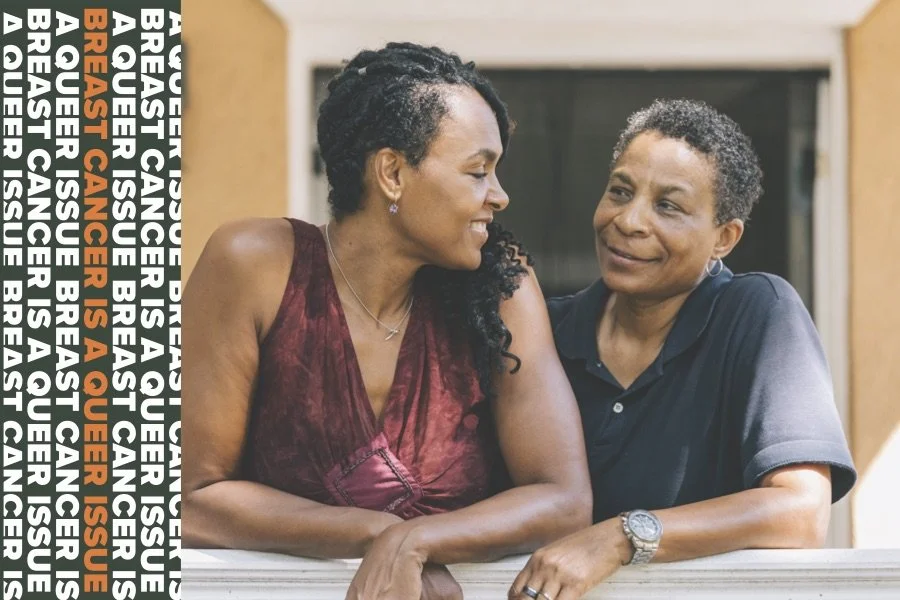
Case Study #2:
Privacy-First Digital Strategies for LGBTQ+ Audiences
Organization: National LGBT Cancer Network
Timeline: 2021 - 2023 (2 years)
My Role: Communications Manager
The Challenge:
When I joined the National LGBT Cancer Network, the organization faced a critical communications paradox:
How do you create an effective digital presence as an LGBTQ+ public health organization during a pandemic when major platforms restrict your content and online attacks threaten community safety?
The Complex Landscape:
The Stakes:
Algorithmic discrimination: Major platforms consistently flagged LGBTQ+ health content as "inappropriate” which caused ongoing issues with erroneous account restrictions and rejected ads.
Rampant online misinformation: LGBTQ+ cancer patients needed reliable access to life-saving health information, but were often unable to find medical care that was both reliable and inclusive of their gender identity and sexuality.
Resource constraints: As a specialized nonprofit, limited budget for paid advertising or platform diversification.
Compliance requirements: All communications had to meet strict federal grant guidelines for health information.
Audience diversity: Needed to reach a wide spectrum of LGBTQ+ adults, with older age groups requiring more equitable design and accessibility preferences.
Life-saving information: Delayed or blocked content meant less education and awareness on cancer screening and treatment decisions for LGBTQ+ audiences, especially for users living in more remote or rural areas.
Community trust: When I arrived, the Network was dealing with damaged community trust from past data security incidents and member harassment, while simultaneously navigating major social media platforms' bans on LGBTQ+ keywords. These combined challenges required a comprehensive user-first strategy focused on rebuilding trust, ensuring information security, and developing alternative communication approaches.
Organizational credibility: Needed to establish authority in both LGBTQ+ advocacy and heatlhcare spaces.
Funding sustainability: Federal grants required compliance tracking on the impact of all deliverables (graphics, reports, research, social media posts), creating extensive review processes with tight deadlines.
The Strategy: Community Safety Over Algorithmic Optimization
Rather than pursuing vanity metrics on unreliable platforms, I developed a comprehensive communication strategy centered on authentic brand identity, strategic digital media, and robust data protection. This involved building essential infrastructure including official branding guidelines, consistent organizational messaging protocols, and secure first-party data collection and storage systems
Phase 1: Comms Infrastructure and Brand Identity Development (Months 1-6)
Developed organization's first comprehensive communications strategy, focused on thought leadership development on X (formerly Twitter), LinkedIn, and email marketing platforms to reach the following key audiences: researchers in the public health and oncology space, healthcare oncology professionals, and LGBTQ+ members or loved ones diagnosed with cancer.
Consolidated fragmented messaging and brand assets across departments to create an official brand guideline.
Established content approval workflows ensuring medical accuracy and 100% on time deliverables.
Brand guide developed by me for the Natl LGBT Cancer Network to create consistent visual brand identity.
Phase 2: Strategy Execution (Months 6-12)
LinkedIn Engagement:
Shared research updates, policy advocacy, and professional resources.
Grew follower base from 1,300 to 2,200 (69% increase in first year)
Email Marketing Infrastructure:
Developed segmented, monthly newsletters for different audiences (medical professionals, patients diagnosed with cancer, public health researchers) focused on health resources, provider education, and key resources for cancer patients. Achieved consistent delivery rates above 85%.
Website Optimization:
Led comprehensive site redesign with cross-functional team of developers and UX designers.
Improved content accessibility and user engagement
Achieved 70% increase in email signups and 20% reduction in bounce rate.
The Results:
Platform Performance:
LinkedIn growth: 1,300 → 3,000 followers (130% increase in 18 months)
Email marketing: $10,000 in incremental fundraising revenue within 5 months
Website optimization: 70% increase in email signups, 20% reduction in bounce rate
Content workflow: Reduced approval process from 12 days to 3 days (75% efficiency improvement)
Community reach: Served 500+ network members with consistent, reliable health information
Qualitative Outcomes:
Community Safety & Trust:
Established reliable communication channels immune to algorithmic discrimination (monthly newsletters and LinkedIn presence).
Built community confidence in organizational messaging and resource accessibility.
Created safe digital spaces for sensitive health discussions hosted on our website.
Organizational Impact:
Positioned organization as leading authority on LGBTQ+ cancer care.
Established sustainable communications infrastructure for future growth.
Created replicable model for other LGBTQ+ health organizations
Official brand colors supplemented with complimentary colors to ensure more accessible, easy to read deliverables while still maintaining brand consistency.
Created a tone and style guide to centralize strategic messaging, inclusive language best practices, and clear do’s and don’ts—ensuring consistency and alignment across all communications.
Example of resources shared in segmented newsletter with other peer public health organizations and colleagues.
Example of original graphic created for Breast Cancer Awareness campaign.
Lessons Learned:
Platform Safety Over Reach: Prioritizing community protection over algorithmic optimization built stronger, more sustainable engagement than chasing maximum visibility on unreliable platforms.
Email Marketing as Community Infrastructure: Direct communication channels proved essential for vulnerable populations needing guaranteed access to life-saving health information, prioritizing first party data and trust.
Professional Platform Strategy: LinkedIn provided ideal space for healthcare advocacy without LGBTQ+ content restrictions, enabling thought leadership development and professional coalition building.
Cross-Functional Workflow: Systematic project management reduced content approval timelines by 75% while maintaining strict quality and compliance standards.
Accessible Content: Developing frameworks for translating complex medical information into culturally competent, accessible language served both community needs and organizational credibility.
Partnership-Based Amplification: Leveraging other organizations' trusted platforms expanded reach without compromising community safety or organizational control.





